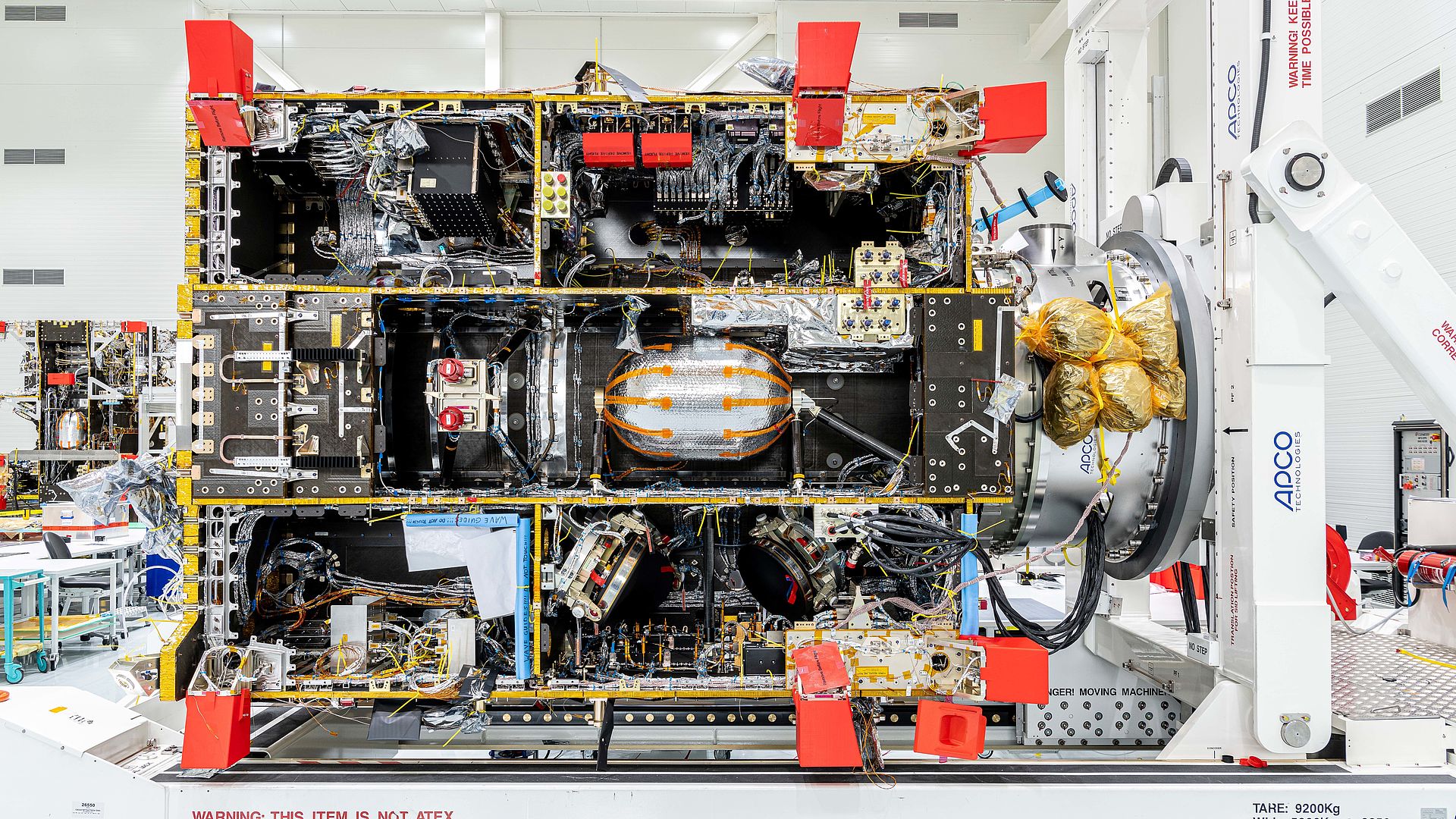If extreme weather events are not identified early enough, there is the potential for populations to be exposed to huge natural phenomena with very little warning. More precise weather forecasts are also a basic requirement for agriculture and air traffic. The MTG (Meteosat Third Generation) weather satellite programme holds out the prospect of improving forecasting ability. On 13 December 2022, the first MTG Imager satellite will be launched into geostationary orbit - with a major contribution from OHB technology. MTG, among the most complex development programmes of satellites in Europe, is the third generation of European weather satellites developed and realized for EUMETSAT (Exploitation of Meteorological Satellites). We answer the 5 most important questions about the weather satellite programme.
1. How is OHB involved in MTG?
OHB’s involvement covers responsibility for all six satellite platforms, two IRS (infrared sounding) instruments for both Sounder satellites and the four telescope assembly units for the Flexible Combined Imager of the Imager satellites. In addition, OHB is also the prime contractor for the MTG-S Mission.
2. What is MTG capable of?
The MTG satellite system will monitor the weather in geostationary orbit at an altitude of 36,000 kilometres. The satellites not only provide cloud images, but also data that can be used to make severe weather forecasts. This is how weather forecasts for Europe will become more precise.
3. What is the Imager capable of?
The Imager satellite delivers cloud images. A new image is delivered every ten minutes. Put simply, the Imager is a large flying camera. More precisely, imager technology delivers images in the visible light spectrum. This data has been actively used by weather agencies for decades. Over the years, imager instrument technology has advanced significantly. With MTG, it is possible to improve the number of spectral channels, i.e. the colours of the images, the precision of the resolution and the coverage and repeatability of the image data.
4. How does OHB contribute to the Sounder?
The Sounder satellite scans the atmosphere over Europe - every 30 minutes. This is how the distribution of temperatures and water vapour, i.e. the composition of the atmosphere and the movement of the air layers in relation to each other, is determined. In more technical terms, this means that the Sounder supplies data in the infrared light spectrum. With the IRS instrument, OHB is building a new generation of infrared detectors with unprecedented sensitivity.
5. When will the other launches take place?
Currently, the launch of the first Sounder is planned for August 2024. Another Imager is scheduled for launch in 2025.

